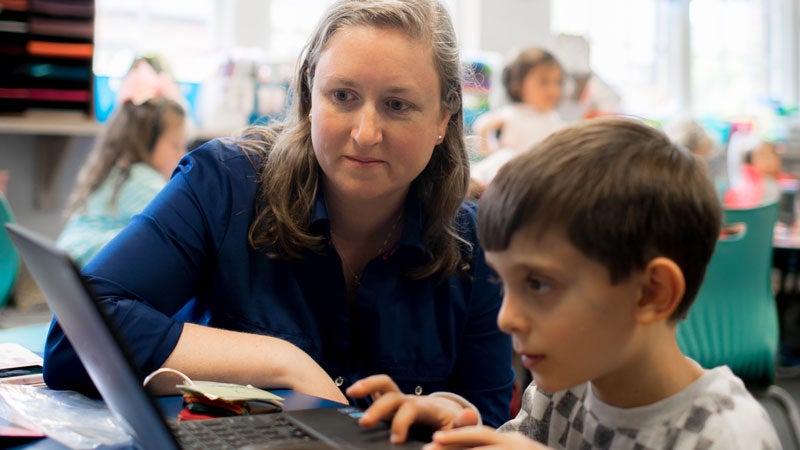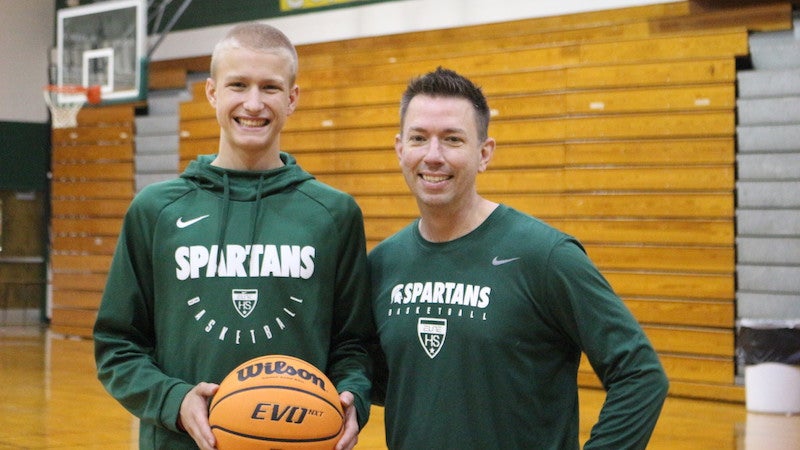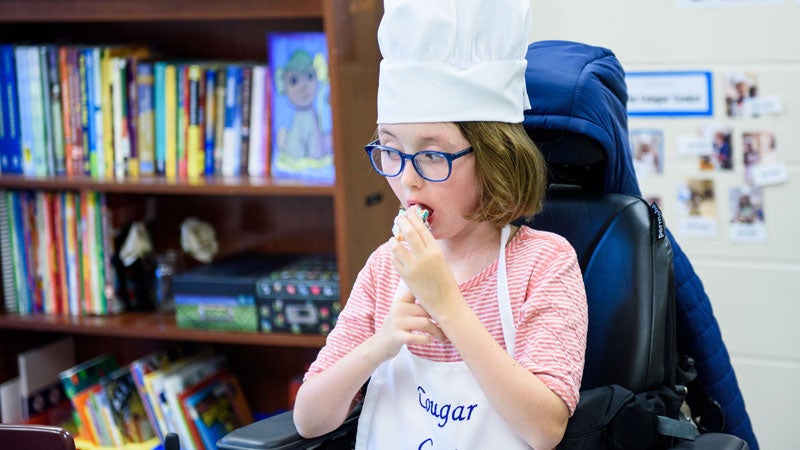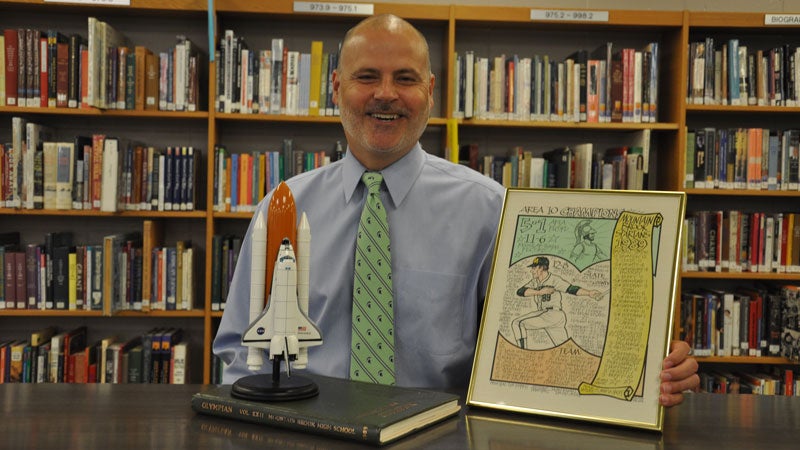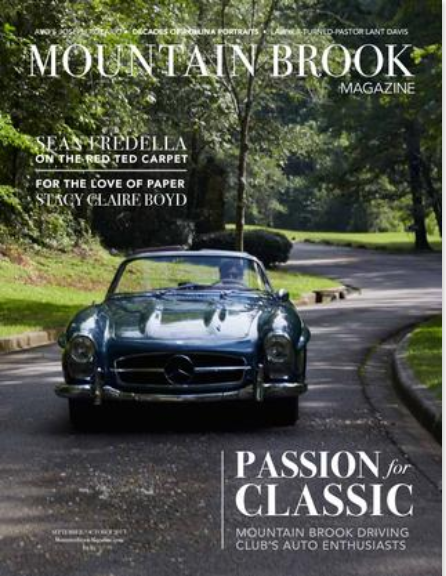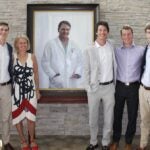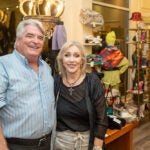When you were a child, did you imagine putting on magic goggles that can take you anywhere on earth, even to the stars? Imagine taking in dazzling 360-degree views of the solar system, video chatting with students across the world, and engaging with material like never before. This is all happening for students in Mountain Brook schools today. “Technology is about different ways to engage students, keep them going with the material to get a better understanding of things… and we have to keep up,” says Mountain Brook Elementary School Technology Coordinator Thea Patrick, one of several specialists leading the way for these advances in education in Mountain Brook Schools.
And Mountain Brook Schools are doing more than keeping up—they are leading the way in putting technology in the hands of students, teachers and administrators. For example, a set of 25 Android smartphone-based Virtual Reality headsets regularly take students across the globe and into outer space using 360-degree photographs from Google Expeditions and videos from the New York Times VR app.
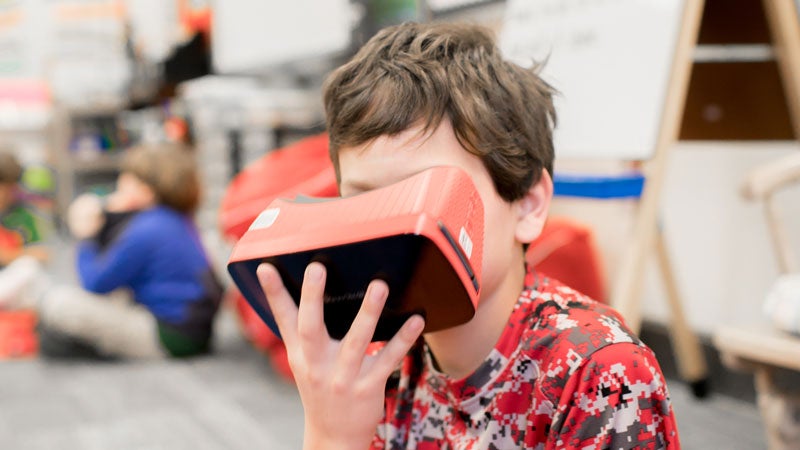 Students compare volcanoes and rock formations on other planets with those on Earth. They take a dive under sea ice in Antarctica and come face-to-face with marine life in ways they may never get to do in person. Teachers can fit the media to their individual curriculum, so a history class can visit a national monument and talk about why it was built, while a math class could visit the same place and look for geometric shapes and patterns—all from inside the classroom.
Students compare volcanoes and rock formations on other planets with those on Earth. They take a dive under sea ice in Antarctica and come face-to-face with marine life in ways they may never get to do in person. Teachers can fit the media to their individual curriculum, so a history class can visit a national monument and talk about why it was built, while a math class could visit the same place and look for geometric shapes and patterns—all from inside the classroom.
“These are places the students could not go as a group, and that’s what we wanted them to have: group experiences, shared experiences they could talk about just like they do on field trips, but instantly,” Thea explains. “Now, just getting those headsets out makes the students pay attention more.”
Even cooler is the fact that Mountain Brook students are actually able to add to this wealth of information themselves. As a part of a Google Expeditions Beta group, MBE and Brookwood Forest students are building their own expeditions for Birmingham, as the city currently has none. In March and April, students used 360-degree cameras to take photographs of important places around the city, like the Birmingham Museum of Art, Civil Rights Institute, Vulcan and UAB. They provided the photos as well as historical, cultural and other pertinent information on each location to Google Expeditions, which has to approve each expedition before adding it to their app.
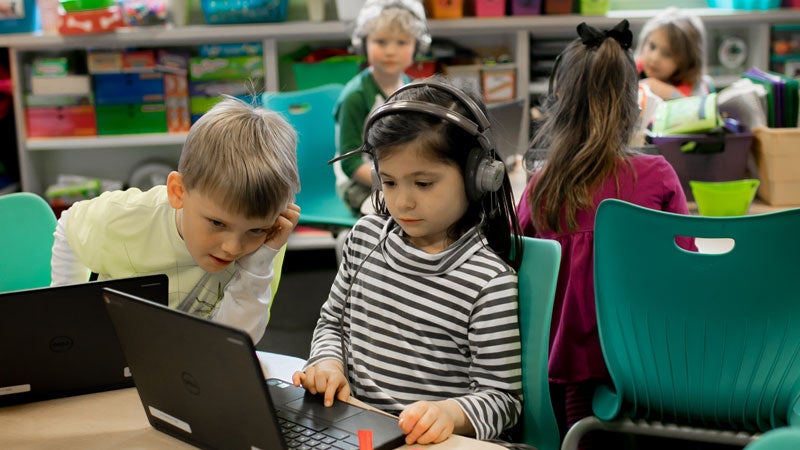 “This is a unique opportunity,” Thea says. “And students are so engaged with this. To know in the future these students could say, ‘That’s my Google Expedition that you watched in China!’ is so cool.”
“This is a unique opportunity,” Thea says. “And students are so engaged with this. To know in the future these students could say, ‘That’s my Google Expedition that you watched in China!’ is so cool.”
Another way students are engaging with information and people across the globe is through Level Up Village (LUV), a program that matches classrooms of similar size and curriculum to complete STEAM experiments and exchange cultural information with one another. For nine weeks, they work on the same projects as their sister classroom and keep each other up-to-date on progress through student-to-student video postcards and the occasional live chat, time zones permitting.
Susan Andrews’ fifth-grade class at MBE used LUV to learn about water safety and filtration this year, and they were paired up with a classroom in Bogotá, Colombia. Students created videos for their virtual pen-pals and even more excited to hear back. Similarly, Kelsey Frey’s kindergarten class at MBE was paired with a class from Jordan, and one of the students was so engaged that he began learning simple words in Arabic so he could speak to their sister class. Kelsey opted for full-class video updates rather than the personal postcards the older kids made.
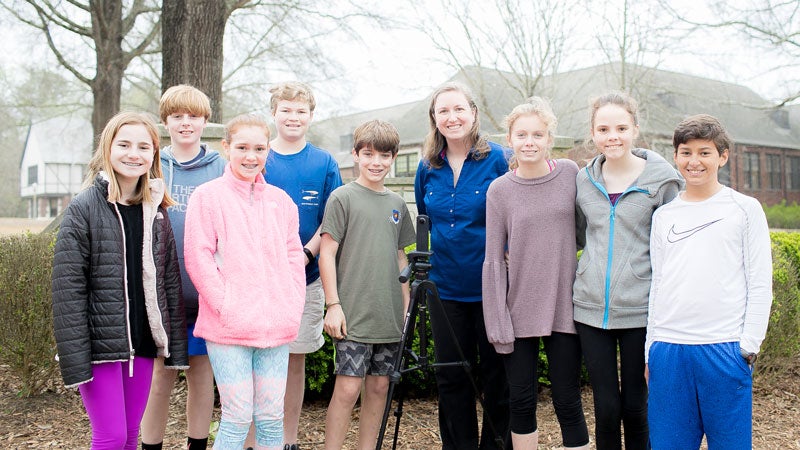 “Tech provides an opportunity for students to have conversations to learn a little more about their fellow man and see that we all have things in common,” Thea says. “We want students to empathize and understand someone else’s perspective. You may not agree with them, but you need to be listening.”
“Tech provides an opportunity for students to have conversations to learn a little more about their fellow man and see that we all have things in common,” Thea says. “We want students to empathize and understand someone else’s perspective. You may not agree with them, but you need to be listening.”
Before MBE kindergarteners are able to read or write sentences, they are already using a program called ScratchJr to learn the basics of coding through cute little sprite characters. Using Chromebook touchscreens, kids can drag and drop with their fingers. And if a child wants to make their cat meow but does not know how, they have no fear trying a bunch of gestures or in announcing their predicament out to the class—and one of their classmates generally comes to the rescue.
“We do have some really supportive students. They can build off each other, and there’s a lot of sharing even in kindergarten,” Thea says. “[The tech] is so engaging that they really want the other kids to be successful. They are so willing to help each other.
“In some ways, it’s really building community because the kids are having to think at a higher level We have to problem-solve to get through a lesson, and the kids just roll with it.”
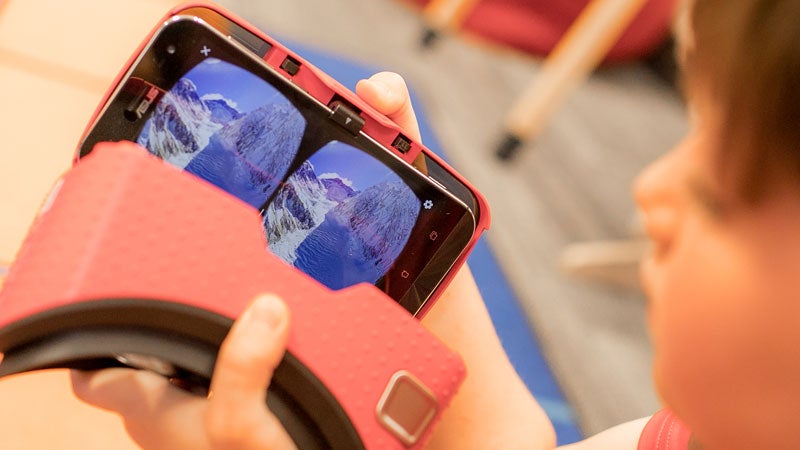 Speaking of thinking at a higher level, through the app CoSpaces Edu, students are creating blocky 3D environments, like in the video game Mindcraft, of planets they dream up in science class. After they build their planets on the Chromebooks, teachers can load them to the VR headsets and let others look around the newly created virtual environment.
Speaking of thinking at a higher level, through the app CoSpaces Edu, students are creating blocky 3D environments, like in the video game Mindcraft, of planets they dream up in science class. After they build their planets on the Chromebooks, teachers can load them to the VR headsets and let others look around the newly created virtual environment.
“Before, students made environments in paper-mâché, but this will take it to the next level,” Thea says. “They can compare the planets’ environments and compare them to each other and to earth to have a better understanding of geology or biology.”
The biggest new technology component currently being tested at the Board of Education is an interactive classroom that tech coordinators hope to have in several schools down the road. The room will be outfitted to have an interactive floor and walls, where students can walk up and manipulate projected objects. A handful of students from Crestline have already tested out the practice room at the board.
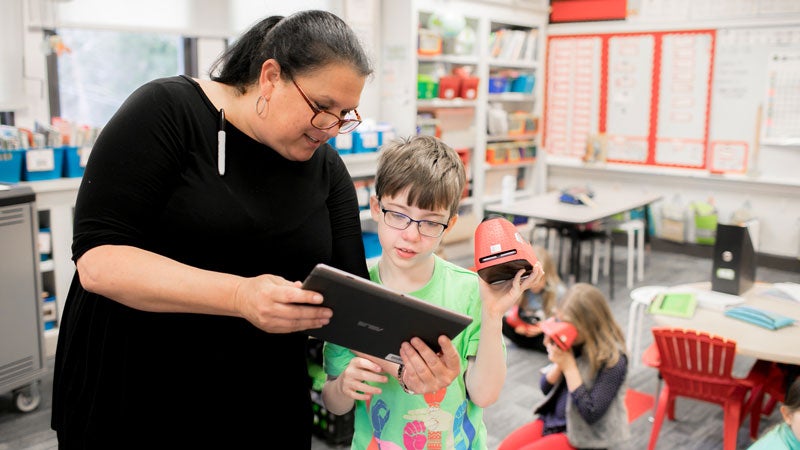 “Our K1 students really can’t use [the VR goggles], so the classroom would give everyone an opportunity to explore virtual reality,” Thea explains. “This technology that you use to create something is what I’m interested in expanding in our schools.”
“Our K1 students really can’t use [the VR goggles], so the classroom would give everyone an opportunity to explore virtual reality,” Thea explains. “This technology that you use to create something is what I’m interested in expanding in our schools.”
According to Thea, all five MBE teachers who applied for the school system’s Institute for Innovation grants in the 2017-18 school year met their tech goals “and beyond,” so plans are in place to expand use of both VR goggles and LUV next year by the full staff. “Parents who have heard about [the tech] or read the blog want their kids to have it, too,” Thea says. “It’s not just a cool thing. They’re really learning.”

